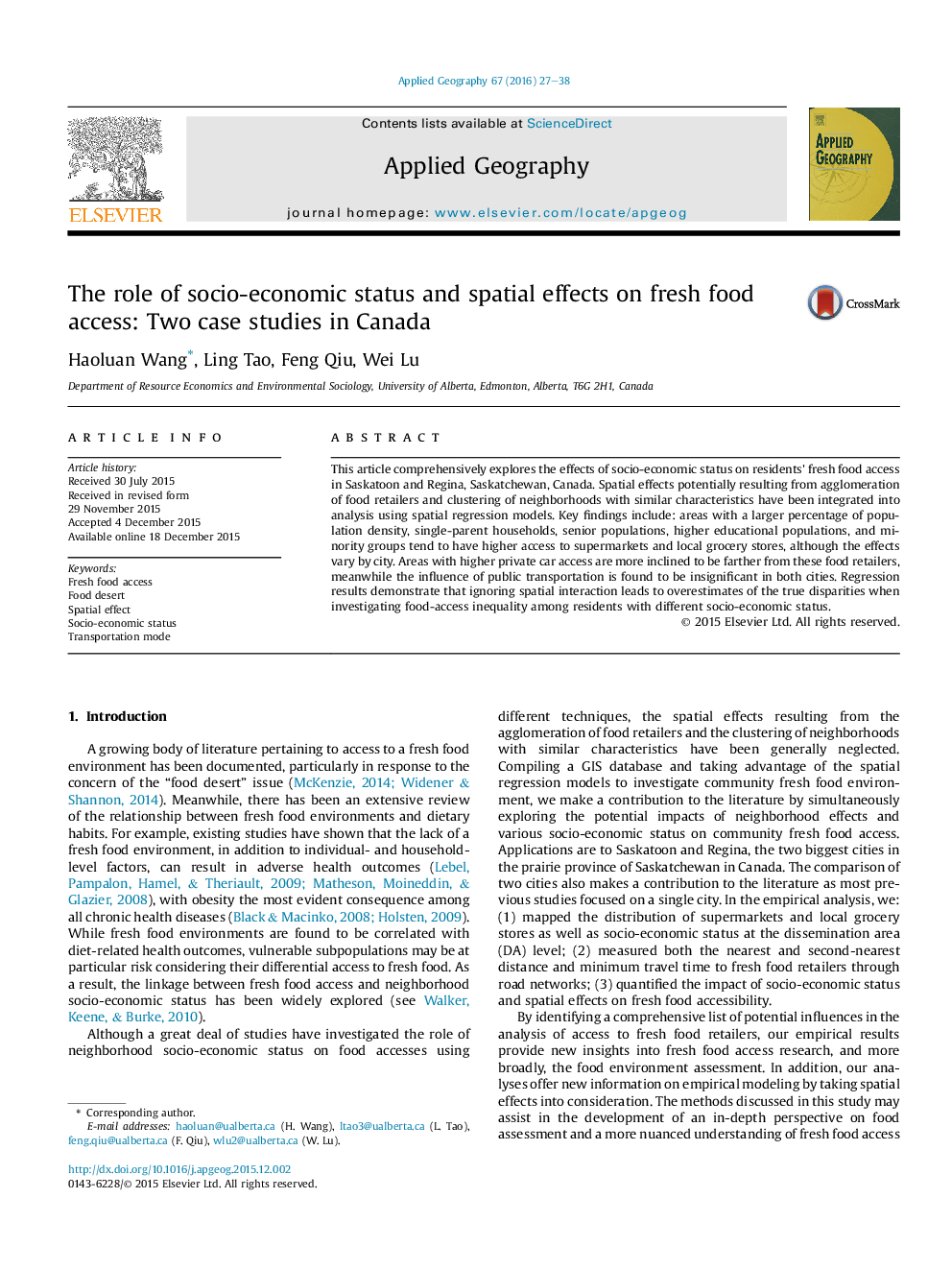| Article ID | Journal | Published Year | Pages | File Type |
|---|---|---|---|---|
| 83207 | Applied Geography | 2016 | 12 Pages |
•Spatial regression models are adopted to allow for neighborhood effects.•Ignoring spatial interactions leads to overestimates of the true disparities.•Senior and minority groups tend to have higher access to fresh food retailers.•The influence of public transportation is found to be insignificant in both cities.•Impacts of socio-economic status on fresh food access vary by two cities.
This article comprehensively explores the effects of socio-economic status on residents' fresh food access in Saskatoon and Regina, Saskatchewan, Canada. Spatial effects potentially resulting from agglomeration of food retailers and clustering of neighborhoods with similar characteristics have been integrated into analysis using spatial regression models. Key findings include: areas with a larger percentage of population density, single-parent households, senior populations, higher educational populations, and minority groups tend to have higher access to supermarkets and local grocery stores, although the effects vary by city. Areas with higher private car access are more inclined to be farther from these food retailers, meanwhile the influence of public transportation is found to be insignificant in both cities. Regression results demonstrate that ignoring spatial interaction leads to overestimates of the true disparities when investigating food-access inequality among residents with different socio-economic status.
